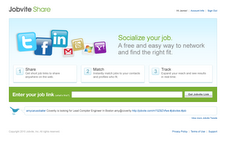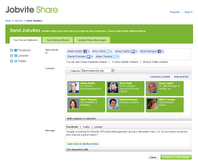For the last few years there has been much said and written about the importance of accurate, timely, and relevant workforce data to support and guide managerial decision making and to ensure that human capital strategy is aligned with and can enable the execution of business strategy.
It is an easy argument to make, but certainly a much more difficult promise to deliver. In large organizations workforce data tends to be scattered across a wide set of disparate systems, from ERP, to ATS, to possibly Talent Management tools. Not to mention the scores of offline spreadsheets and databases maintained by HR and and line managers. How many mid-size to large organizations out there are still calculating and processing employee annual salary updates on a slew of manually distributed Excel spreadsheets? Go ahead and admit it, you are certainly not alone.
And even if the organization does have the technical capacity to collect and begin to analyze this information, it can be a challenge to present, communicate, and deliver the data in a meaningful way to the people that the information benefits the most - the line managers, supervisors, and front-line in the trenches folks. Their need to make better informed decisions about how to leverage existing capability and how they may need to develop new capability to deliver customer service, create opportunities, engage employees is essential, and all the best data collection and and analysis tools will fail if the delivery mechanism does not resonate with these key users.
The image at right is something called The Vernon Farm Calculator. It was manufactured in the 1940s as a tool to provide farmer's with ready access to important information about crop sizes, unit of measurement conversions, yield calculations, and a host of other important data points that the average out in the trenches farmer would need to analyze, assess, and then execute his or her strategies to arrive at the best possible outcome. Sounds a bit like what today's managers need to do as well, just substitute mares, bushels of corn, and the combine's last service date with employees with a certain skill, production schedules, and historical sales data.
measurement conversions, yield calculations, and a host of other important data points that the average out in the trenches farmer would need to analyze, assess, and then execute his or her strategies to arrive at the best possible outcome. Sounds a bit like what today's managers need to do as well, just substitute mares, bushels of corn, and the combine's last service date with employees with a certain skill, production schedules, and historical sales data.
I think as designers and implementers of information systems we can learn a few things about the delivery of essential intelligence to our users from the design of the Vernon Farm Calculator.
Portable
The calculator is designed to be a portable, carry along with you or toss it on the front seat of the truck kind of tool. When the farmer is out at the barn or in the fields and needed to do a quick calculation about pigs, or wheat or whatever, he or she did not need to stop what they were doing, drive back to 'Farm HQ' or even worse, put in a request to the Farm's HR or IT department to run a report. And as an added bonus, the calculator was made of tin, not cardboard, which ensured it would stand up to the rigors of the farm environment, and not need to be 'upgraded' or 'maintained' all that often.
Multi-use
The calculator did not just serve one purpose, it informed the farmer across a wide range of important data types that all taken together were going to be critical to the overall success of his enterprise. He or she did not need to carry around one 'tool' for assessing crop amounts and another tool to calculate the expected marketplace value of the new set of pigs. The folks at Vernon had to have consulted with real farmers and gotten to know the wide range of information that they would need to make the calculator a useful and practical resource.
Simple
The Vernon Farm Calculator came with a one-page user guide. Sure, the print was kind of small, but all the essential information for the average farmer to be able to get information and insight to help run the farm was on one page. And better still, important operational instructions for some of the more complex features of the tool were printed directly on the face of the tool itself. So in many instances there was no need to refer back to the one-page guide. I think that this kind of simplicity in operation, the ability to distill the important features and instructions to their base level, and the capacity to put the most needed 'help' information in plain sight are all lessons in design that can be taken from the farm calculator.
the essential information for the average farmer to be able to get information and insight to help run the farm was on one page. And better still, important operational instructions for some of the more complex features of the tool were printed directly on the face of the tool itself. So in many instances there was no need to refer back to the one-page guide. I think that this kind of simplicity in operation, the ability to distill the important features and instructions to their base level, and the capacity to put the most needed 'help' information in plain sight are all lessons in design that can be taken from the farm calculator.
Relevant
The farm calculator was only about one thing, providing the farmer with easy access to information that would help him or her have a better chance at succeeding in their business. That's it. There is no extraneous functionality, no clutter, nothing that detracts from the design and the ultimate delivery. I think we can also take a lesson here, it the information or the hot new feature that we think, as designers or implementers think is wonderful, if it truly does not directly assist the managers in making decisions needed to execute their business, then it surely is superfluous.
That's it - the end of a too long post about a 1948 Farmer's tool. Those farmer's were on to something for sure.
___________________________________________________________________________________
Note - The Vernon Farm Calculator is an example of what is called a Volvelle. Volvelles have been around for hundreds of years, you can learn a bit more about them here.

 Steve
Steve






